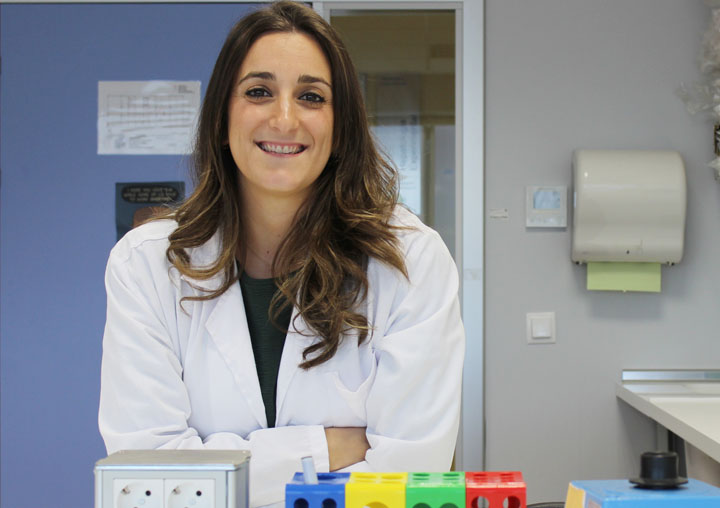
A Universitat de València (UV) and IIS La Fe team, integrated in the Biomedical Research Centre in Network of Hepatic and Digestive Diseases (CIBERehd), has proven the potential of metabolomics for the study of hepatotoxicity of new medical drugs thanks to its relevance as a discovery tool of new biomarkers. Marta Moreno Torres, a Ramón y Cajal fellowship researcher of the Universitat de València, is the main author of the study.
The hepatotoxicity, or Drug-Induced Liver Disease (DILI), is one of the most frequent adverse clinical reactions and an important cause of morbidity and mortality. It is one of the main causes of drug recalls, both in the early stages of development and during clinical usage, once it is already approved. This is why this issue constitutes a crucial concern for the pharmaceutical industry, with sanitary and economic repercussions.
The research team has studied different aspect of medical drugs’ hepatotoxicity with the aim of identifying DILI biomarkers based on metabolomics. This work confirms that the integration of metabolomics in the study of hepatotoxicity in vivo (with patients that have suffered hepatotoxicity episodes) as well as in vitro (using hepatocyte culture as a model of the human liver) provides valuable information for deepening the understanding of hepatotoxicity mechanisms and for anticipating its effects.
Identifying and modifying the hepatotoxicity
This way, an innovative, highly sensitive tool is integrated, which will allow to successfully manage the research of potential hepatotoxicity of new medical drugs in very early stages of their development. This would avoid their premature recall from the market due to late detection of severe hepatotoxicity events.
Doctor Marta Moreno Torres explains that “achieving an ultrasensitive method for metabolomic detection that is, at the same time, robust, reproducible and offers comparable results (even if the experiments have been performed at different moments), has been a difficult task. This aspect is fundamental for the success of this technology in the study of hepatotoxicity.”
“The ability to identify the possible hepatotoxicity in new medical drugs during early stages of their development is still the primary challenge. The aim is to modify them or to select analogues with similar therapeutic effects and lesser toxic effects”, pointed out doctor José V. Castell, emeritus researcher of IIS La Fe and head of the Experimental Hepatology Joint Unit.
In the area of omics, disciplines that use innovative and disruptive technologies to research biological phenomena, metabolomics has recently emerged as a featured tool in the field of biomedical research. Its advances have been prominent, significantly contributing to the development of compounds with biological activity and to the biomedical diagnosis.
The Experimental Hepatology Joint Unit belongs to the Health Research Institute Hospital La Fe (UV-IIS La Fe), and is affiliated with the Centro de Investigación Biomédica en Red of Hepatic and Digestive Diseases (CIBERehd) and the Bioengineering, Biomaterials and Nanomedicine Centre (CIBER-bbn). It has a solid and acknowledged trajectory in the study of pharmaceuticals’ hepatotoxicity. Throughout the last years, it has been developing innovative strategies to analyse in more detail and with more precision the adverse effects that medical drugs can have on the liver.
The principle of toxicometabolomics, referred to the application of metabolomics to the study of hepatotoxicity, is based of a fundamentally simple concept. In each living cell, there is a variety of small molecules, known as metabolites, that participate in the biochemical processes that take place inside it. When a cell is exposed to a bioactive substance, this substance can interfere with the normal cell metabolism, altering the usual course of these processes and, therefore, affecting the consequences of these intracellular metabolites. Some of these alterations are irrelevant or harmless for the cell, while others imply significant metabolic changes, which can cause dysfunction, toxicity and, sometimes, cell death. Hence, by analysing the global changes that a new medical drug induces on the set of metabolites present in the cell (its metabolome) and assessing their biochemical relevance, we can obtain a more accurate vision of their predictable hepatotoxic effects.
Up until a few years ago, the analysis of the cell metabolome was truly complex. However, the introduction of highly efficient separation methods, such as the high-performance liquid chromatography (HPLC), together with the accurate detection of the mass of metabolites and of fragments obtained by the application of a beam of electrons on them in the mass spectrometer, has prominently eased the accurate identification of metabolites present in the sample. In addition, the intensity of the signal provides information about the changes in the relative abundance of said metabolites.
----------------------
Quintás G, Castell JV and Moreno-Torres M (2023) The assessment of the potential hepatotoxicity of new drugs by in vitro metabolomics. Front. Pharmacol. 14:1155271. doi: 10.3389/fphar.2023.1155271










